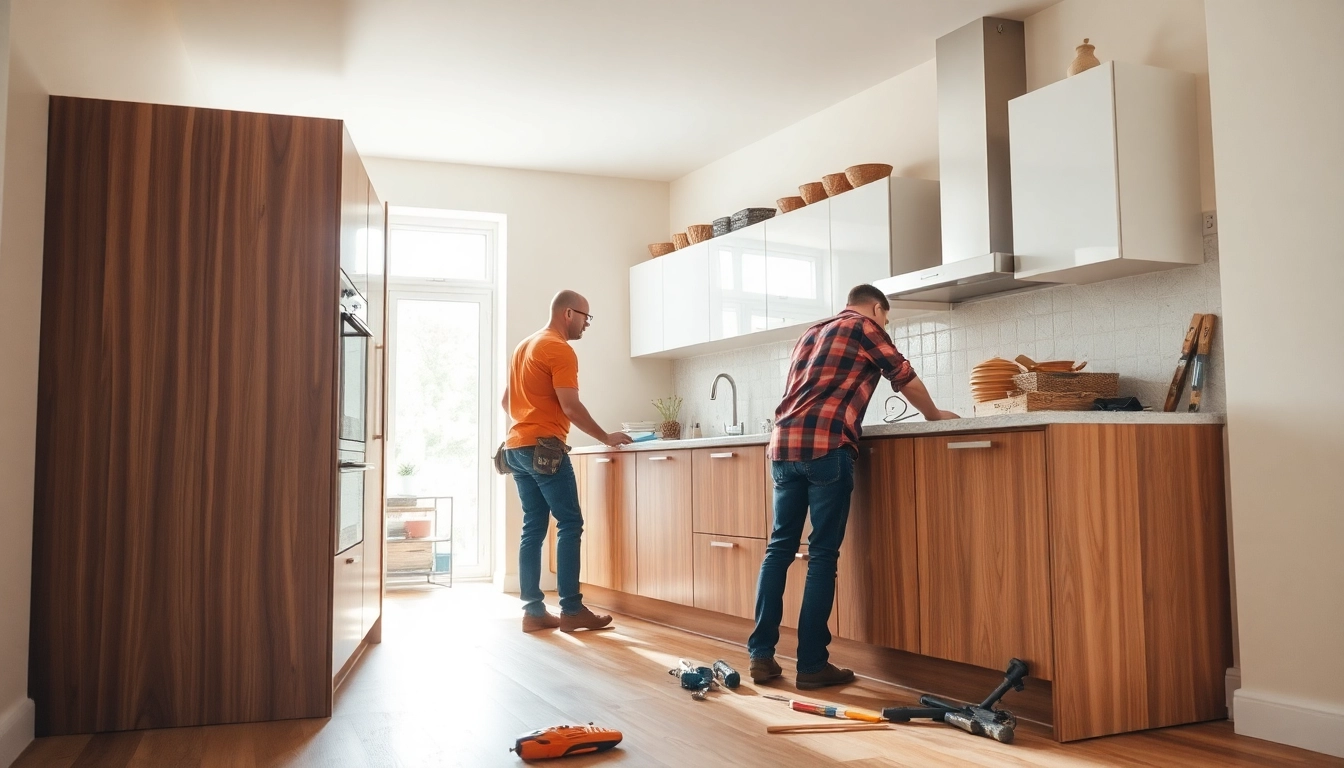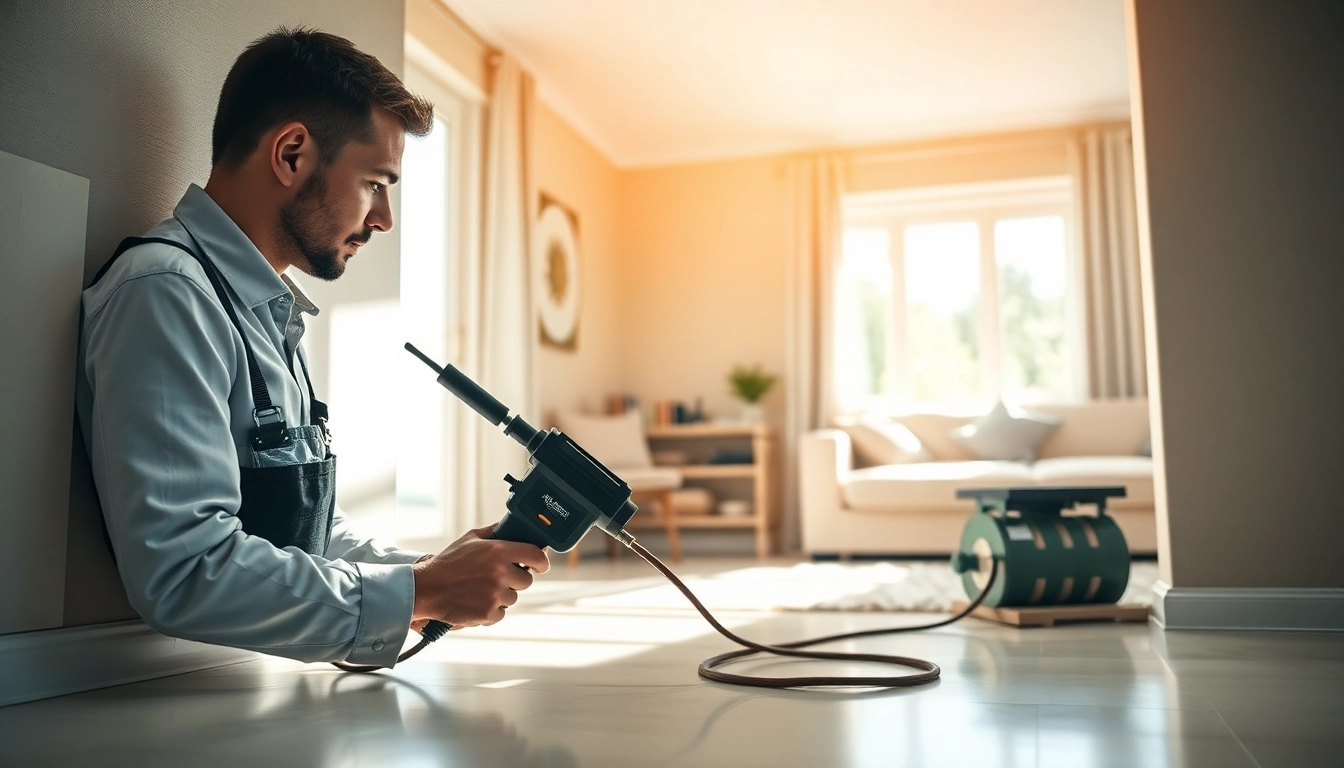Understanding the Role of Kitchen Fitters
Kitchen fitters play a crucial role in transforming dull spaces into vibrant culinary environments. Their expertise transcends mere assembly; they ensure that every component, from cabinets to countertops, is correctly installed, incorporated into the existing structure, and configured to maximize functionality. If you’re considering a kitchen upgrade, enlisting kitchen fitters can streamline the process and alleviate stress.
What Do Kitchen Fitters Do?
Kitchen fitters specialize in installing kitchens based on clients’ designs and preferences. Their responsibilities typically include:
- Measuring and designing: Accurately measure the kitchen space to create tailored layouts.
- Installation: Assemble and fit cabinets, worktops, sinks, appliances, and any related fixtures.
- Electrical and plumbing work: Collaborating with licensed professionals to ensure all systems function properly.
- Finishing touches: Installing splashbacks, lighting fixtures, and other aesthetic elements.
As kitchen renovation projects can be complex, hiring a professional kitchen fitter can be invaluable. Their knowledge of building regulations and standards ensures safe and efficient installation.
Key Skills of an Effective Kitchen Fitter
A successful kitchen fitter must possess a blend of technical skills and personal attributes, such as:
- Attention to detail: Precision is critical when aligning cabinets and fittings.
- Problem-solving abilities: They must quickly resolve issues that arise during installations.
- Technical knowledge: Understanding various installation techniques, materials, and safety regulations.
- Communication skills: Clear communication with clients and collaboration with other contractors is essential.
Moreover, a good kitchen fitter stays updated with current trends and innovations in kitchen design and installation practices.
Choosing the Right Kitchen Fitters for Your Project
Selecting the right professional can significantly impact your project’s outcome. Here are key considerations when searching for kitchen fitters:
- Credentials and experience: Verify qualifications and past work. Look for portfolios showcasing previous installations.
- Reviews and recommendations: Always seek testimonials from previous clients to gauge reliability and skill.
- Transparent pricing: Request detailed quotes that outline service costs and materials.
- Communication style: Ensure that they understand your vision and can articulate their suggestions.
Planning Your Kitchen Installation
A successful kitchen installation begins long before the first cabinet is assembled. Careful planning sets the stage for an efficient transformation.
Consultation and Design: What to Expect
The consultation phase is vital for understanding your needs and preferences. During this phase, expect the following:
- Initial Meetings: Discuss taste, preferences, and budget with your kitchen fitter.
- Visualizations: Many fitters will provide 3D renderings or sketches to help you visualize the finished kitchen.
- Material Samples: You’ll often be shown samples of cabinetry, countertops, and flooring options.
Use this time to communicate any design inspirations or functional requirements that are important to you.
Budgeting for Kitchen Fitting Services
Budgeting is critical to avoid overspending and ensure all desired elements are included. Consider the following:
- Labor costs: Kitchen fitters generally charge between £250 and £350 per day, with experienced professionals commanding higher rates.
- Materials: Allocate funds for cabinetry, countertops, fixtures, and appliances.
- Unexpected costs: Account for contingencies such as floor repairs or plumbing adjustments.
It is advisable to set a budget and stick to it while remaining flexible for unexpected expenses.
Materials and Fixtures: Making Informed Choices
The selection of materials and fixtures plays a vital role in both the aesthetics and longevity of your kitchen. Keep in mind:
- Quality over cost: Invest in high-quality materials, which may be costlier upfront but often save money in the long run due to durability.
- Style and functionality: Choose fixtures that complement the kitchen’s style while enhancing its functionality.
- Supply chain considerations: Check lead times for materials to avoid delays in your project.
Common Challenges in Kitchen Fitting
Even with careful planning, installing a kitchen can present challenges. Understanding these challenges can help homeowners and fitters alike navigate potential pitfalls.
Identifying Common Mistakes by DIY Fitters
While DIY projects can save money, they also pose risks for inexperienced individuals. Common mistakes include:
- Incorrect measurements: Mistakes in measurements can lead to misaligned cabinets or gaps.
- Poor installation of appliances: Neglecting to follow manufacturer instructions can result in malfunctioning appliances.
- Ignoring plumbing and electrical work: Failing to consult professionals in these areas can lead to safety hazards.
How to Overcome Installation Hurdles
Successful kitchen fitters know how to preemptively avoid installation hurdles. Here are strategies to consider:
- Thorough Pre-Installation Check: Inspect all materials before installation starts to ensure everything is up to standard.
- Regular Communication: Keep in touch with all parties involved (clients, suppliers, electricians) to maintain alignment and address any concerns quickly.
- Following Regulations: Ensure all installations comply with local building codes and safety regulations.
Ensuring Compliance with Building Regulations
Building regulations vary by locality but typically encompass safety and structural concerns. Kitchen fitters should be well-versed in these regulations, including:
- Electrical safety standards: Adherence to standards that govern electrical installations and appliances.
- Plumbing codes: Compliance with regulations pertaining to water supply and drainage systems.
- Ventilation requirements: Certain ventilation systems are mandatory to ensure that kitchens remain safe and free from harmful fumes.
Maximizing Efficiency in Kitchen Projects
Efficient project management is key to a successful kitchen installation, balancing timelines, and workflow.
Timeline Expectations for Kitchen Installations
Understanding the typical timeline for a kitchen installation is essential for managing expectations. A standard kitchen installation can take anywhere from:
- One to Two Weeks: Smaller or straightforward renovations.
- Two to Four Weeks: More extensive remodels that may involve structural changes or custom installations.
Ensure to account for potential delays due to material sourcing or scheduling conflicts with contractors.
Strategies for Coordinating with Contractors
Coordinating various contractors can enhance project efficiency. Key strategies include:
- Clear Roles and Timelines: Assign specific roles and set clear deadlines for each contractor’s work.
- Regular Meetings: Hold status meetings to discuss progress and adjust timelines as necessary.
- Use Project Management Tools: Employ tools to track tasks and communicate progress among all parties involved.
Innovative Tools and Techniques for Modern Fitters
The evolution of technology has provided kitchen fitters with tools to enhance their installations. Some notable innovations include:
- 3D Design Software: Allows clients to visualize their future kitchen and adjust designs before physical work begins.
- Advanced Cutting Tools: Precision tools improve accuracy and minimize material waste during installation.
- Smart Home Integration: Incorporating technology allows for modern conveniences that can enhance user experience.
Evaluating the Success of Your Kitchen Installation
Once your kitchen is installed, it’s important to evaluate its success to ensure that it meets all expectations.
Performance Metrics: What to Look For
Measuring the success of a kitchen installation can be subjective, but certain performance metrics can help guide evaluations:
- Functionality: Does the kitchen meet your cooking and entertaining needs?
- Aesthetics: Are the design and materials visually appealing to your tastes?
- User Satisfaction: Take feedback from all who will regularly use the kitchen to assess satisfaction levels.
Post-Installation Tips to Maintain Your Kitchen
Proper maintenance can prolong the life of your kitchen. Consider these post-installation tips:
- Regular Cleaning: Keep surfaces clean to prevent wear and damage.
- Check Appliances: Regularly inspect appliances and fixtures to ensure everything functions correctly.
- Update Where Needed: Remain open to small upgrades or improvements to keep your kitchen modern and efficient.
Soliciting Feedback and Professional Growth for Fitters
Feedback is a valuable asset for continuous improvement. Kitchen fitters should consider:
- Client Surveys: Regularly ask for client feedback post-installation to identify areas for improvement.
- Continuing Education: Stay updated on the latest kitchen trends and installation techniques through workshops and seminars.
- Networking: Engage with other professionals in the industry to share insights and best practices.



